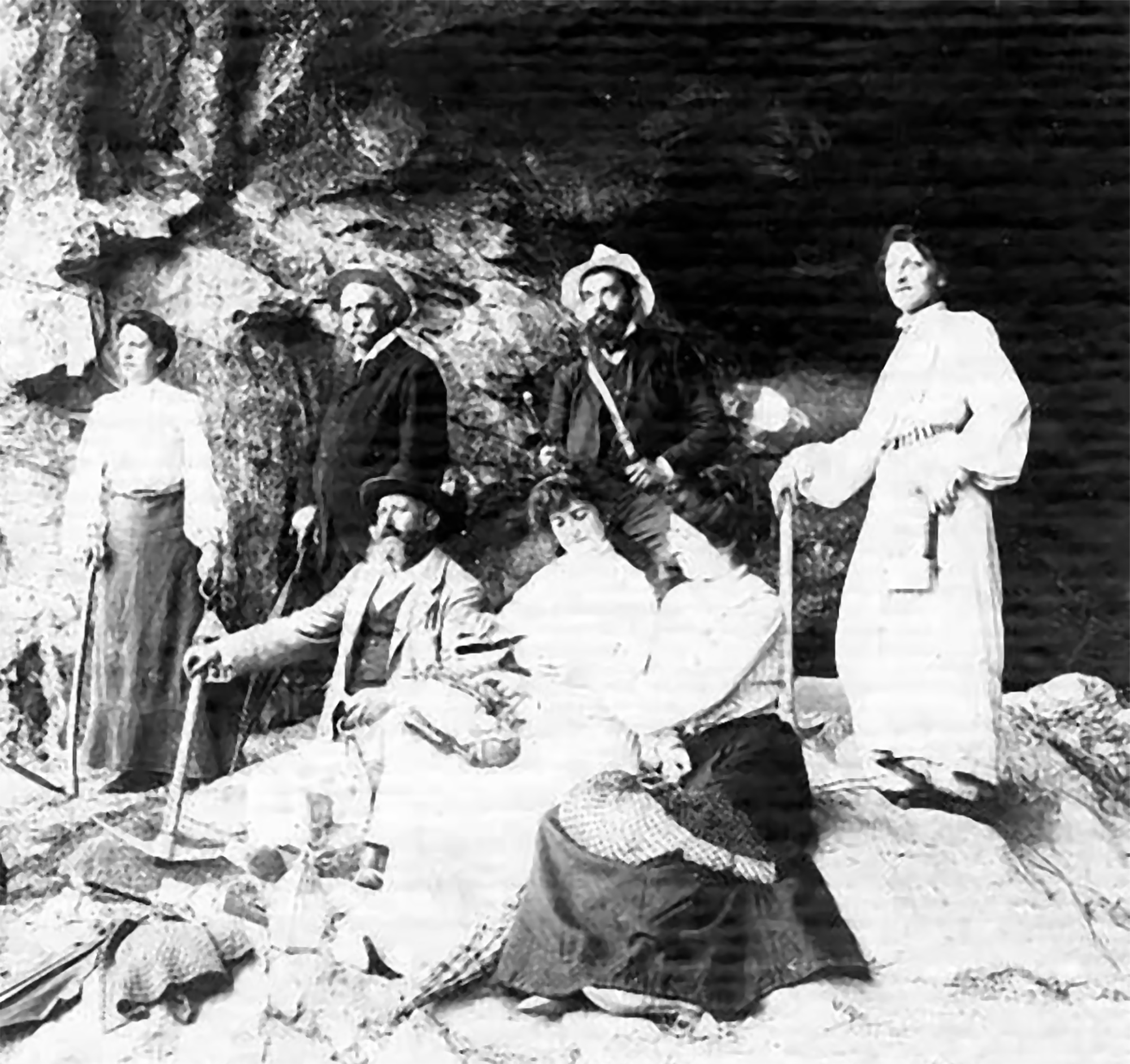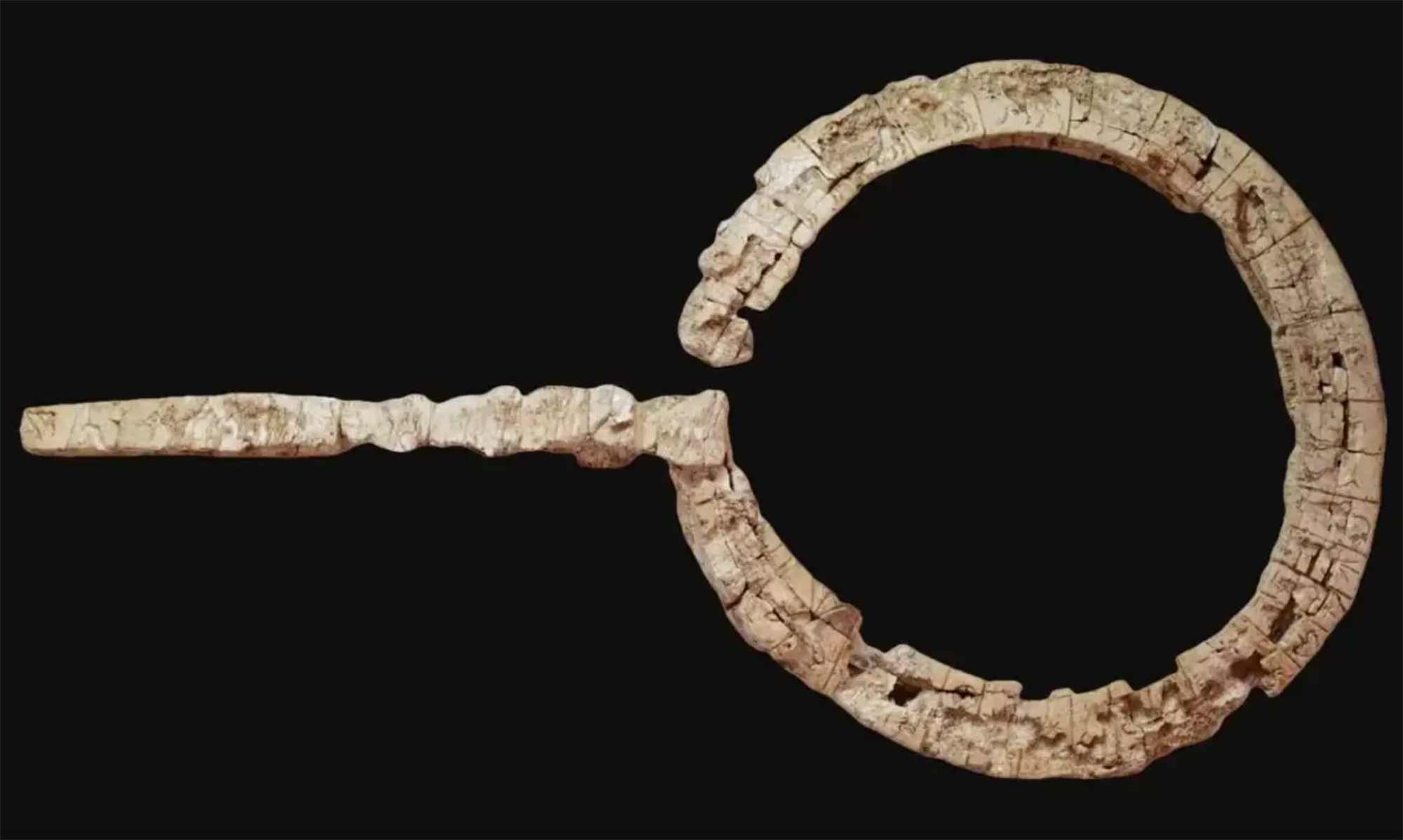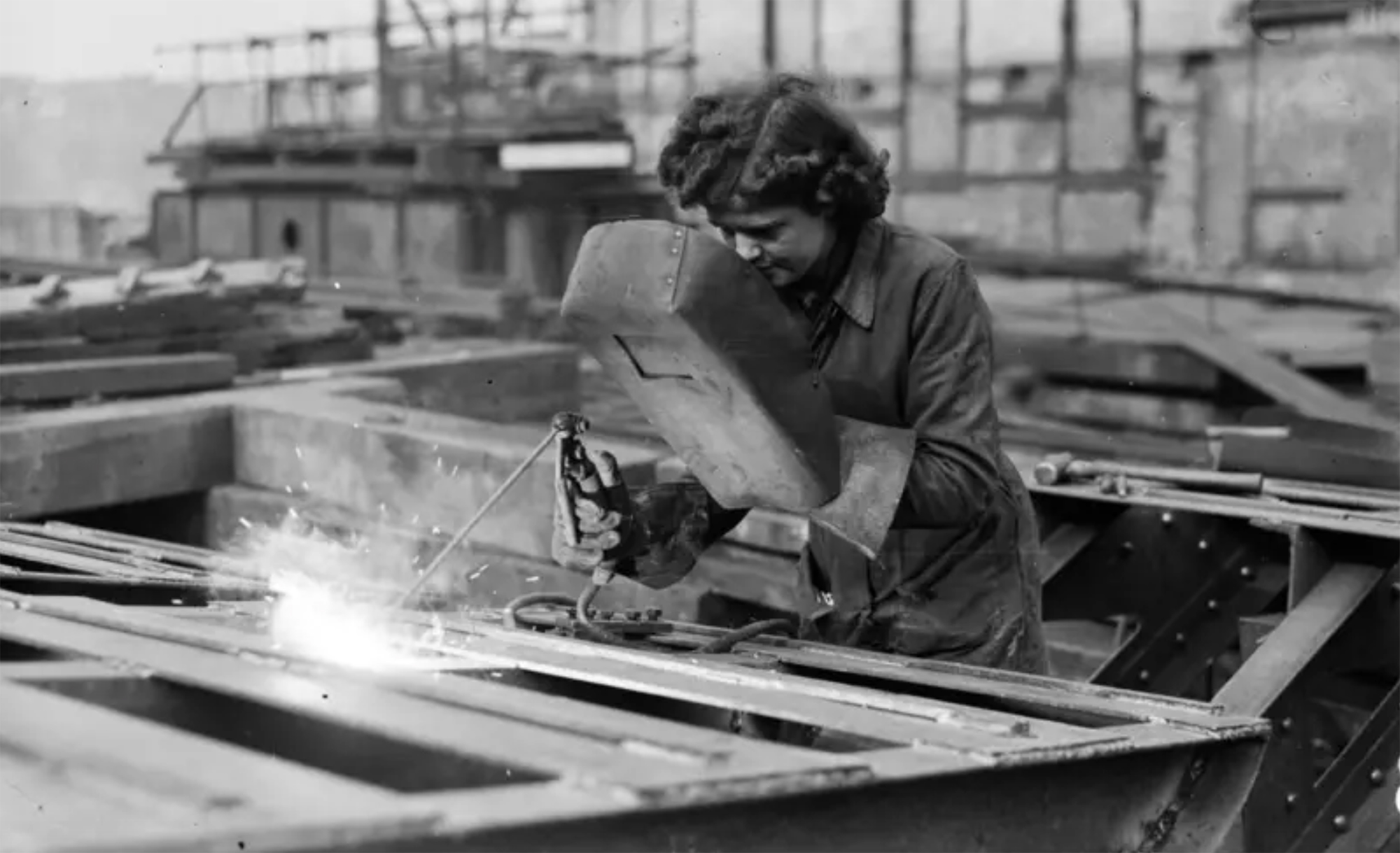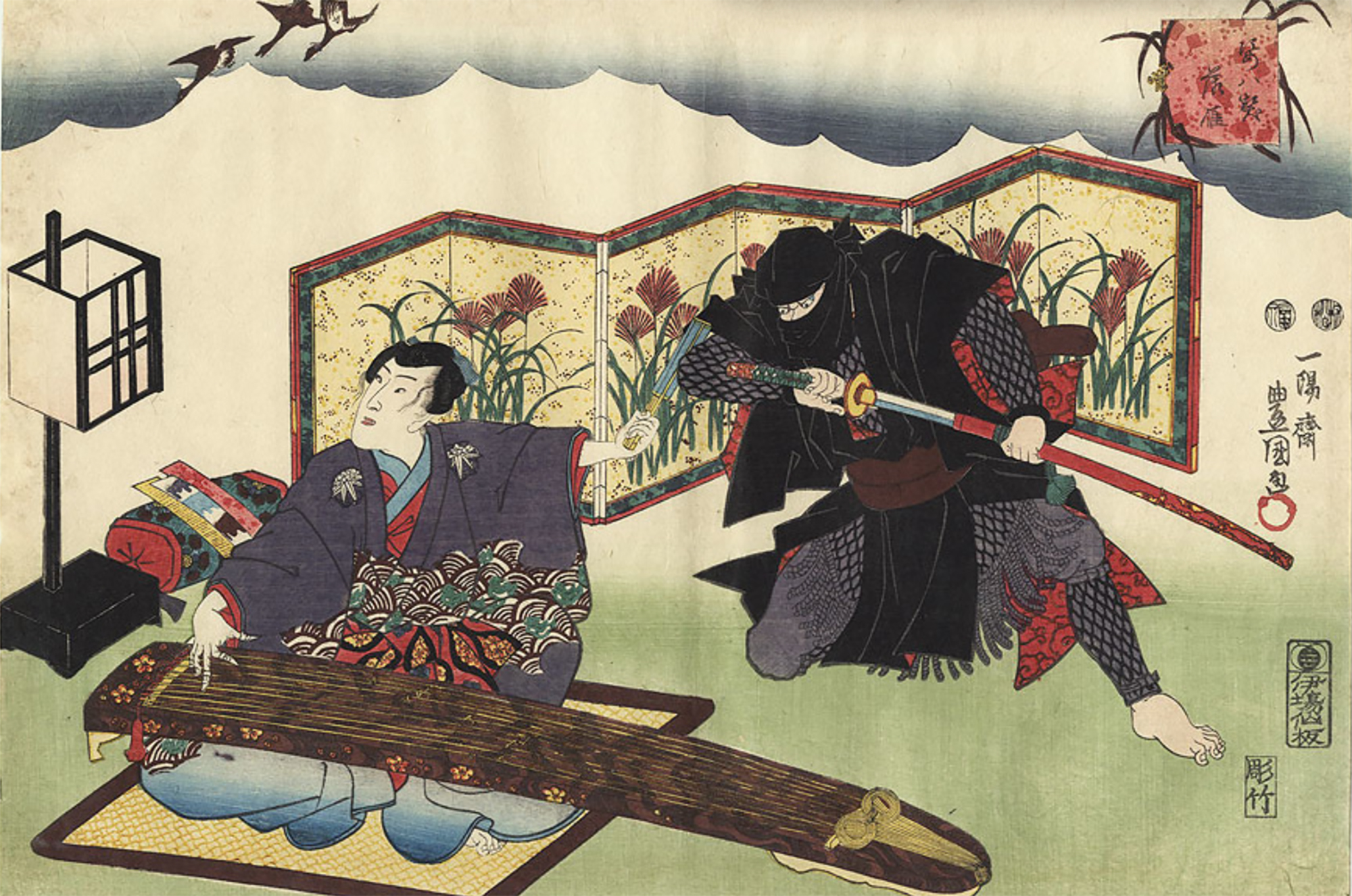Shadow of archaeologists in the shade

Errenteria (Gipuzkoa), 1892. In the caves of Aizpitarte the first archaeological excavations of Gipuzkoa were carried out, at the hand of the group led by Count Lersundi. Eleven years later, in 1903, the king of Spain, Alfonso XIII, visited the site and with this excuse photographed the working group; in the photo we see that there were women in the group, although their names have not come to us.
This photograph starts the exhibition Women Archaeologists in Gipuzkoa, which can be visited at the Oiasso de Irun museum until the end of March next year.
The first name is Maria Luisa Aranzadi. Telesforo was familiar to Aranzadi and appears in a photograph made in Aralar in 1917. That same year Telesforo, José Miguel de Barandiarán and Enrique Eguren began one of the brightest stages of Gipuzkoan archaeology. And in the shadow of that brilliance there was also a woman.
The Society of Sciences Aranzadi was born 30 years later and was fundamental in its foundation Pilar Sansinenea (1905-1997), as well as in the works carried out by her husband Jesús Elosegi to find cromlechs and dolmens.
In the early 1960s, the archaeologist Dolores Echaide (1928-2018) worked on the excavations of Soria, Torralba and Ambrona. The work carried out by the multidisciplinary team was a milestone in European archeology, but Echaide’s work was not deserved recognition.
Also pioneered was the excavation of Lezetxiki (Arrasate), directed by Aita Barandiaran from 1956 to 1968, in which Ana María Muñoz Amilibia, the first archaeologist of the Spanish State, intervened.
After excavations, these shadow works outside the fields lack visibility of the excavation director's position, being often in the hands of women such as palinology, sedimentology, numismatics, osteoarcheology, etc.
Secondary archaeologists
The two excavations carried out in the 1970s show the reasons why the work of archaeologists was in the shadow. In 1972 the investigation began of the Roman necropolis of Nuestra Señora de Xantalén, in Irún. Women were the majority in this group, with Pilar Utrilla, Ana Cava and Teresa Andrés, among others.
But then, in archaeology, prehistoric excavations were considered of the first order and historical research, such as those of the Roman era, was considered of the second category, in which women acted mostly. In addition, the head of the excavation of Ama Xantalen was a man: Ignacio Barandiaran. In 1979 the excavation from the cave of Amalda in Zestoa was also directed by a man: Jesus Altuna.
The group included several women who were responsible for recording the Amelia Baldeon and Koro Mariezkurra materials. After excavations, these jobs in the shadow outside the fields do not have the spectacularity of the excavation director's position, and they have often been in the hands of women: palinology, sedimentology, numismatics, osteoarcheology… And this reality is not only limited to Gipuzkoa, but all these examples also reflect the situation outside Gipuzkoa.
In the case of Gipuzkoa, the change began 40 years ago. In 1983 the Society of Sciences Aranzadi launched the archeology department, in which several women participated. And the following year, in 1984, Mertxe Urteaga directed the excavations of the cave of Iruaxpe III; in Gipuzkoa a a woman first received authorization to lead an excavation.
From that moment on, the exhibition collects the names of dozens of women archaeologists. But this doesn't mean that they didn't dedicate themselves to archaeology before, but that their fundamental work began to be seen little by little from then on.
Linear A is a Minoan script used 4,800-4,500 years ago. Recently, in the famous Knossos Palace in Crete, a special ivory object has been discovered, which was probably used as a ceremonial scepter. The object has two inscriptions; one on the handle is shorter and, like most of... [+]
Londres, 1944. Dorothy izeneko emakume bati argazkiak atera zizkioten Waterloo zubian soldatze lanak egiten ari zela. Dorothyri buruz izena beste daturik ez daukagu, baina duela hamar urte arte hori ere ez genekien. Argazki sorta 2015ean topatu zuen Christine Wall... [+]
Bilbo, 1954. Hiriko Alfer eta Gaizkileen Auzitegia homosexualen aurka jazartzen hasi zen, erregimen frankistak izen bereko legea (Ley de Vagos y Maleantes, 1933) espresuki horretarako egokitu ondoren. Frankismoak homosexualen aurka egiten zuen lehenago ere, eta 1970ean legea... [+]
Japonia, XV. mendea. Espioitzan eta hilketa ezkutuetan espezializatutako eliteko talde militarra sortu zen. Edo horixe uste du behintzat Stephen Turnbull historialari britainiarrak. Beste aditu batzuen ustez, askoz lehenago sortu ziren ninjak, duela 2.300-2.500 urte inguru. Eta... [+]
Eskultura grekoerromatarrek bere garaian zuten itxurak ez du zerikusirik gaurkoarekin. Erabilitako materiala ez zuten bistan uzten. Orain badakigu kolore biziz margotzen zituztela eta jantziak eta apaingarriak ere eransten zizkietela. Bada, Cecilie Brøns Harvard... [+]
Chão de Lamas-eko zilarrezko objektu sorta 1913an topatu zuten Coimbran (Portugal). Objektu horien artean zeltiar jatorriko zilarrezko bi ilargi zeuden. Bi ilargiak apaingarri hutsak zirela uste izan dute orain arte. Baina, berriki, adituek ilargietan egin zituzten motibo... [+]
Hertfordshire (Ingalaterra), 1543. Henrike VIII.a erregearen eta Ana Bolenaren alaba Elisabet hil omen zen Hatfield jauregian, 10 urte besterik ez zituela, sukarrak jota hainbat aste eman ondoren. Kat Ashley eta Thomas Parry zaintzaileek, izututa, irtenbide bitxia topatu omen... [+]
Luxorren, Erregeen Haranetik gertu, hilobi garrantzitsu baten sarrera eta pasabide nagusia aurkitu zituzten 2022an. Orain, alabastrozko objektu batean Tutmosis II.aren kartutxoa topatu dute (irudian). Horrek esan nahi du hilobi hori XVIII. dinastiako faraoiarena... [+]
AEB, 1900eko azaroaren 6a. William McKinley (1843-1901) bigarrenez aukeratu zuten AEBetako presidente. Berriki, Donald Trump ere bigarrenez presidente aukeratu ondoren, McKinleyrekiko miresmen garbia agertu du.
Horregatik, AEBetako mendirik altuenari ofizialki berriro... [+]
Urruña, 1750eko martxoaren 1a. Herriko hainbat emakumek kaleak hartu zituzten Frantziako Gobernuak ezarritako tabakoaren gaineko zergaren aurka protesta egiteko. Gobernuak matxinada itzaltzeko armada bidaltzea erabaki zuen, zehazki, Arloneko destakamentu bat. Militarrek... [+]
In the Maszycka cave in Poland, remains of 18,000 years ago were found at the end of the 19th century. But recently, human bones have been studied using new technologies and found clear signs of cannibalism.
This is not the first time that a study has reached this conclusion,... [+]
Porzheim, Germany, February 23, 1945. About eight o’clock in the evening, Allied planes began bombing the city with incendiary bombs. The attack caused a terrible massacre in a short time. But what happened in Pforzheim was overshadowed by the Allied bombing of Dresden a few... [+]
Judea, 2nd century AD. In the turbulent atmosphere of the Roman province, a trial was held against Gaddaliah and Saul, accused of fraud and tax evasion. The trial was reported on a 133-line paper in Greek (pictured). Thinking that it was a Nabataean document, the papyrus was... [+]
Poloniar ikerlari talde batek Sevillako Italica aztarnategiko Txorien Etxea aztertu du, eta eraikinaren zoruko mosaikoak erromatar garaiko hegazti-bilduma xeheena dela ondorioztatu du.
Txorien etxean 33 hegazti daude mosaikoetan xehetasun handiz irudikatuta. Beste... [+]
Vietnam, February 7, 1965. The U.S. Air Force first used napalma against the civilian population. It was not the first time that gelatinous gasoline was used. It began to be launched with bombs during World War II and, in Vietnam itself, it was used during the Indochina War in... [+]

























